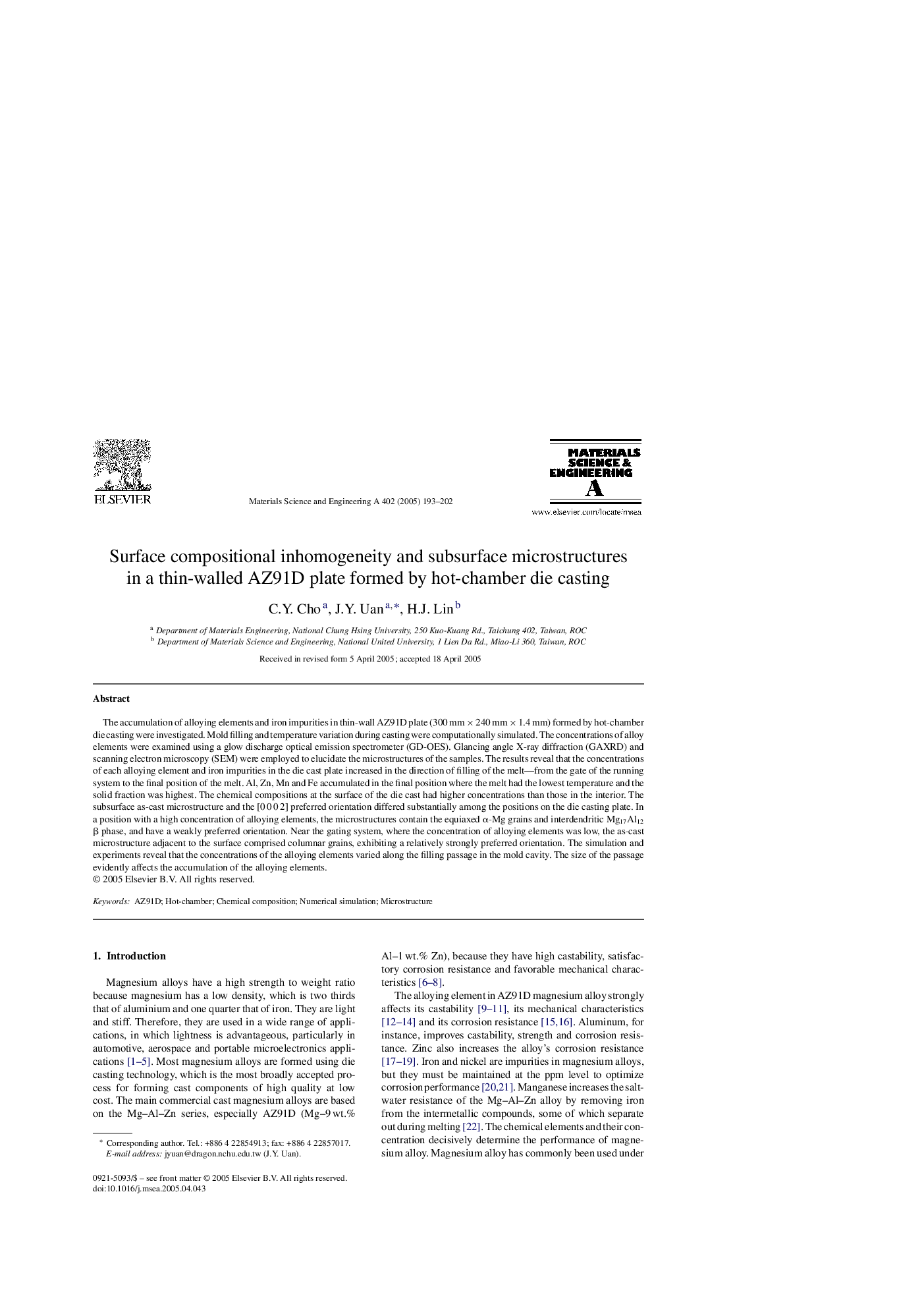| کد مقاله | کد نشریه | سال انتشار | مقاله انگلیسی | نسخه تمام متن |
|---|---|---|---|---|
| 9796044 | 1514940 | 2005 | 10 صفحه PDF | دانلود رایگان |
عنوان انگلیسی مقاله ISI
Surface compositional inhomogeneity and subsurface microstructures in a thin-walled AZ91D plate formed by hot-chamber die casting
دانلود مقاله + سفارش ترجمه
دانلود مقاله ISI انگلیسی
رایگان برای ایرانیان
کلمات کلیدی
موضوعات مرتبط
مهندسی و علوم پایه
مهندسی مواد
دانش مواد (عمومی)
پیش نمایش صفحه اول مقاله

چکیده انگلیسی
The accumulation of alloying elements and iron impurities in thin-wall AZ91D plate (300 mm Ã 240 mm Ã 1.4 mm) formed by hot-chamber die casting were investigated. Mold filling and temperature variation during casting were computationally simulated. The concentrations of alloy elements were examined using a glow discharge optical emission spectrometer (GD-OES). Glancing angle X-ray diffraction (GAXRD) and scanning electron microscopy (SEM) were employed to elucidate the microstructures of the samples. The results reveal that the concentrations of each alloying element and iron impurities in the die cast plate increased in the direction of filling of the melt-from the gate of the running system to the final position of the melt. Al, Zn, Mn and Fe accumulated in the final position where the melt had the lowest temperature and the solid fraction was highest. The chemical compositions at the surface of the die cast had higher concentrations than those in the interior. The subsurface as-cast microstructure and the [0 0 0 2] preferred orientation differed substantially among the positions on the die casting plate. In a position with a high concentration of alloying elements, the microstructures contain the equiaxed α-Mg grains and interdendritic Mg17Al12 β phase, and have a weakly preferred orientation. Near the gating system, where the concentration of alloying elements was low, the as-cast microstructure adjacent to the surface comprised columnar grains, exhibiting a relatively strongly preferred orientation. The simulation and experiments reveal that the concentrations of the alloying elements varied along the filling passage in the mold cavity. The size of the passage evidently affects the accumulation of the alloying elements.
ناشر
Database: Elsevier - ScienceDirect (ساینس دایرکت)
Journal: Materials Science and Engineering: A - Volume 402, Issues 1â2, 15 August 2005, Pages 193-202
Journal: Materials Science and Engineering: A - Volume 402, Issues 1â2, 15 August 2005, Pages 193-202
نویسندگان
C.Y. Cho, J.Y. Uan, H.J. Lin,